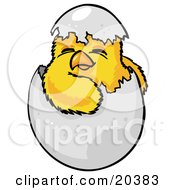Breeding a Parakeet
If you want to breed baby parakeets, realize that is extra responsibility for you and of course, your bird. A person really should own parakeets for several years before they start thinking about raising baby parakeets. It is a serious thing, to cause new life to be brought in this world and have it be dependent on you. Breeding may not turn out well or be successful, and this can burden you with extra trouble. So consider and reconsider before attempting breeding.
Here are basic instructions on breeding parakeets:
Selecting a Pair
First, you need a male and female that are at least one year old. Selecting a pair that is already bonded will help ensure a shorter time until they begin to mate and lay eggs. And get this straight, the female is called the hen.
Note that females WILL lay eggs even if there isn't a male the unfertilized eggs just won't hatch into parakeet babies.
Set-Up
You should remove a cage grate IF YOU HAVE ONE. If it's unremovable, line the bottom with black and white newspapers.
A nest box is very important to provide a safe enclosure for your bird. A nest box should be attatched to the OUTSIDE of the cage.

A wooden insert with a concave circle should be in the bottom of the nesting box to prevent splayed legs. The concave area in the nest is also so that the hen can sit on all her eggs without any of them rolling away. Splayed legs is a deformity that occurs in the nest during a chick's development. Possible causes are insufficient or improper bedding materials or the hen unintentionally sitting on the chick too much. The condition is characterized by one or both legs extending horizontally from the hip, instead of in the normal position downward. The condition is correctable in young chicks. However, if the condition is left unchecked, the bones will calcify and the condition will be permanent.

Nest Box Insert
Shavings (unscented) should be layered in the bottom of the box over the wooden insert. The hen will adjust the shavings to her liking.
The parents will go through a lot of seed and water when caring for a nest full of growing chicks, so provide a lot of food and drink.
Pieces of soft wood for the female budgie to chew on will satisfy her need for gnawing and also can help get her into the mood to breed. Be sure the wood is safe for birds by buying this material at a bird or pet store.
The best results for breeding is from October through March. Most comfortable temperatures to keep them in is from 65 to 75 degrees Fahrenheit (18 to 24 degrees Celsius), and humidity helps the eggs to hatch better.
Eggs
Eggs that are fertilized take about 17-20 days before they hatch. If she lays eggs without having this interaction with a male, the eggs are unfertilized. That's like most chickens that lay eggs for us humans to eat. Those eggs you get in the supermarket are unfertilized eggs. They won't turn into baby chickens. It can take about 3 weeks for an egg to get out of a female's body.
When the hen starts to lay eggs, she will lay an egg every other day. A clutch of eggs is normally anywhere from 4 to 6 eggs, but sometimes 8 or more. Eggs that are fertilized take about 18-20 days before they hatch. A new chick is born every two days. The eggs hatch out in the same order as they were laid.

The babies hatch featherless. They develop down, then pin feathers. The pin feathers will open as the chick develops. It takes about 4 weeks of care after hatching before the chicks are fully feathered and ready to be on their own.
One common problem that occurs during breeding is egg binding.
Egg binding occurs when a hen who is forming an egg in her uterus does not have enough calcium to finish forming the egg shell. The shell does not become hard enough to push out, which causes the hen extreme stress and extreme risk.
To prevent egg binding it is very important to have a cuttlebone and mineral block available in the breeding cage. It is important to regularly check if the cuttlebone and mineral block have been used up. If so, they need to be replaced immediately.
Some clinical signs of egg binding are loss of appetite, depression, abdominal straining, and sitting fluffed on the bottom of the cage. Some hens may pass large wet droppings while others may not pass any droppings due to the egg's interfering with normal pooping. When a hen becomes egg bound, you can try holding the rear end of the hen in a bowl of fairly warm water. This will help to pass the egg. Keep in mind that you might have to wait awhile, so be patient. Don't try to manipulate/push the egg. If it breaks, the hen and baby will die.
Another way is to apply (by massaging) olive oil or another safe lubricant on and around the cloaca.
If the hen still can't lay the egg, you will have to find medical care for this bird (an avian vet) immediately, or you will lose the hen.
Happy hatching!
